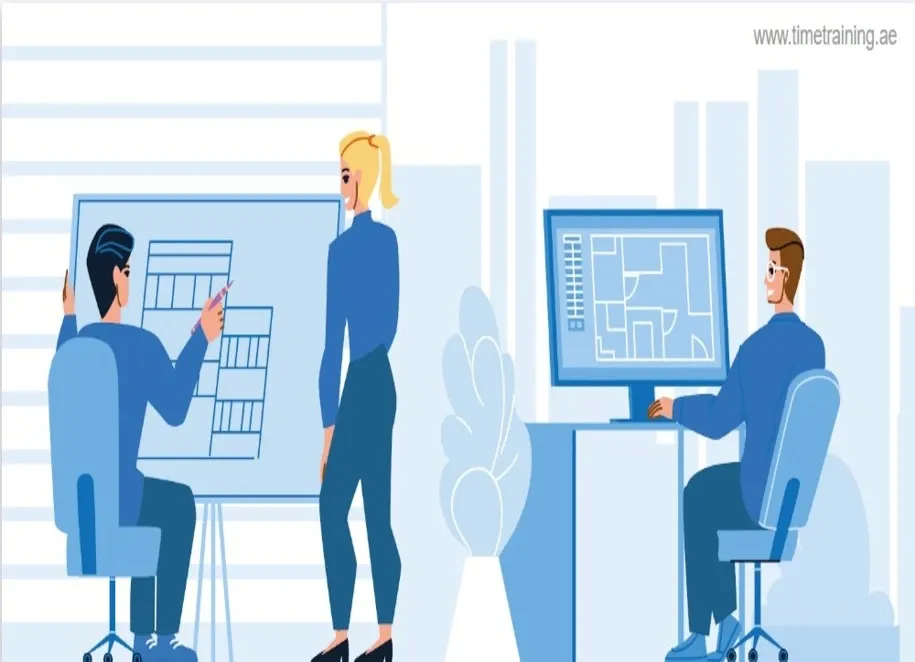Abu Dhabi has established sustainability as a top priority for all construction projects. If you’ve worked on a construction project here in recent years, you have likely come across Estidama and the Pearl Rating System.
Estidama, which means "sustainability" in Arabic, encompasses a comprehensive framework for promoting sustainable development practices. A key component of Estidama is the Pearl Building Rating System, a green building rating tool specifically designed to assess and evaluate sustainable construction practices throughout Abu Dhabi.
These frameworks are not optional; they are integral to the way buildings are envisioned, approved, and constructed within the emirate. As the construction industry increasingly embraces digital solutions, Autodesk Revit has emerged as a crucial platform for navigating this dynamic regulatory landscape. By leveraging Revit’s capabilities, professionals can more effectively ensure compliance with sustainability standards, ultimately contributing to a greener and more sustainable future for Abu Dhabi.
What is Estidama and the Pearl Rating System?
Estidama, which means “sustainability” in Arabic, is the framework that shapes Abu Dhabi’s environmental ambitions in the built environment. Central to it is the Pearl Rating System (PRS), which evaluates buildings based on energy efficiency, water conservation, material sourcing, and indoor environmental quality. A 2 Pearl Rating is mandatory for government-funded buildings, while private projects must meet a minimum 1 Pearl Rating.
Role of Revit in Meeting Abu Dhabi's Sustainable Building Regulations
Autodesk Revit is more than just a 3d modelling tool. It’s a Building Information Modelling (BIM) platform that supports sustainable, data-driven decision-making from concept to construction. The Department of Municipalities and Transport (DMT) is actively modernizing Abu Dhabi’s building permit process through AI enabled BIM tools. While Revit is not explicitly mandated, it’s widely used due to its compatibility with these digital workflows.
For infrastructure projects, submission guidelines set by the DMT detail required levels of model granularity and data standards. In this context, Revit’s ability to handle complex models, embedded data, and structured documentation makes it a strong choice for consultants navigating municipal processes.
|
insight
Current BIM mandate
Automated compliance checks: AI reviews submitted BIM models to ensure alignment with Abu Dhabi’s building codes.
2D to 3d conversion: The system can convert consultants’ 2D CAD drawings into detailed 3d BIM models for a more thorough review.
Virtual Assistant Chatbot: Available 24/7 to guide users on permit applications and code requirements.
|
Let’s take a look at how Revit assists in meeting Abu Dhabi's sustainable building regulations.
1. Revit Aligns with Estidama Requirements
Revit’s tools are well suited to address the environmental performance criteria that Estidama enforces. For example:
-
Climate-responsive energy analysis: Revit supports custom simulations based on local UAE climate data, allowing designers to optimize glazing, insulation, and shading.
-
Material tracking: Teams can assess whether selected materials are regionally sourced or have a low environmental impact, aligning with PRS material credit requirements.
-
Efficient water modeling: Plumbing systems can be modeled and tested for efficiency using Revit’s MEP features, essential for meeting Abu Dhabi’s water conservation goals.
2. Daylighting and Energy Simulations in Abu Dhabi
In Abu Dhabi’s desert environment, managing heat and solar exposure is crucial. Revit enables simulations that show how natural light enters and moves through a space at different times of the year. Designers can adjust façade elements, internal layouts, or window systems based on insights from using Revit.
Revit enables daylighting simulations that help:
Daylighting studies also help fulfill Pearl Rating requirements related to indoor environmental quality and passive design strategies.
3. Automating Compliance Checks with Revit Plugins
Revit’s emerging tools like Insight and Green Building Studio allow teams to automate energy modeling and compliance validation. Revit models can be used in conjunction with the DMT’s AI based review tools, accelerating permit approvals and reducing back-and-forth on technical submissions.
These tools streamline workflows by syncing Revit models with the DMT’s AI-based systems, reducing delays and enhancing approval success rates.
4. Revit in Practice: Local Projects and Certifications
Masdar City, Abu Dhabi’s flagship sustainable development, has piloted several buildings using Revit for Passive solar design, MEP coordination and Solar shading analysis. These projects achieved dual certifications, Estidama and LEED, highlighting Revit’s central role in green design.
Other public buildings, museums, and infrastructure projects across the emirate have adopted Revit to support sustainability targets while simplifying submission to municipal authorities.
5. Revit Collaboration with BIM for Green Design Teams
Sustainable design requires coordination across disciplines. Revit when used together with BIM 360, enables seamless collaboration among architects, engineers, contractors, and sustainability consultants. Everyone works off a single model, which reduces errors and ensures that sustainable strategies aren’t lost in translation.
This shared environment also helps track Estidama credits throughout the project timeline, improving accountability and communication.
6. Smarter Material Selection in Revit
Revit’s material libraries include embedded data such as Embodied carbon, Manufacturing location and Environmental impact. This allows designers to make better informed decisions about finishes and systems that meet PRS material credits. Custom material parameters can also be added to support region specific sustainability goals.
7. MEP Modelling for Efficient HVAC and Water Use
Revit’s MEP systems modeling plays a vital role in optimizing resource use. You can simulate thermal zoning, cooling loads, and HVAC system performance tailored to the Gulf climate.
Water saving designs like greywater reuse systems and low flow fixtures can be incorporated and evaluated for compliance. This level of precision supports compliance with Estidama benchmarks and ensures building systems operate efficiently in the region’s hot climate.
Check out: Autodesk Revit Features
Revit vs Other Tools in the UAE Market
While platforms like SketchUp and Rhino offer flexibility in early stage design, they often require multiple plugins or exports for performance simulations. Revit, by contrast, provides an integrated environment for design and documentation, helping teams embed sustainability from the outset and carry it through to construction.
That integration becomes particularly valuable when models are reviewed under Abu Dhabi’s BIM Documentation Guidelines.
BIM and Sustainability Skills in Demand
As more of Abu Dhabi’s public sector projects transition to BIM based workflows, professionals who can combine sustainability knowledge with tools like Revit are becoming increasingly valuable. Local training programs, including those focused on Revit Architecture and Revit MEP, are already emphasizing compliance ready workflows to meet this growing demand.
Final Thoughts
Abu Dhabi is leading the way in sustainable, smart city development, powered by digital transformation in construction. In this landscape, Revit is more than just software; it’s a strategic asset for navigating both technical and regulatory challenges.
From early-stage energy modelling to automated compliance checks, Revit offers the tools professionals need to meet regulatory, environmental, and performance goals, making it a smart choice for future-ready projects.
If you're working in Abu Dhabi's built environment or want to upgrade your skills for the future, Revit is a solid investment.
 +971 2 6713828
+971 2 6713828




